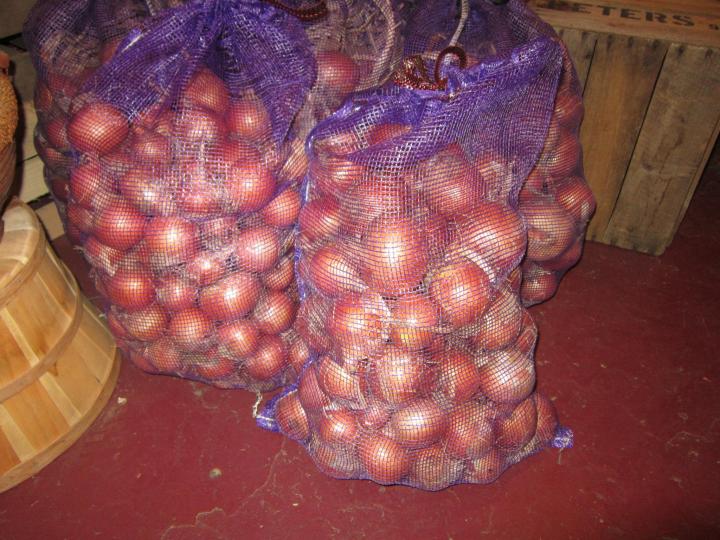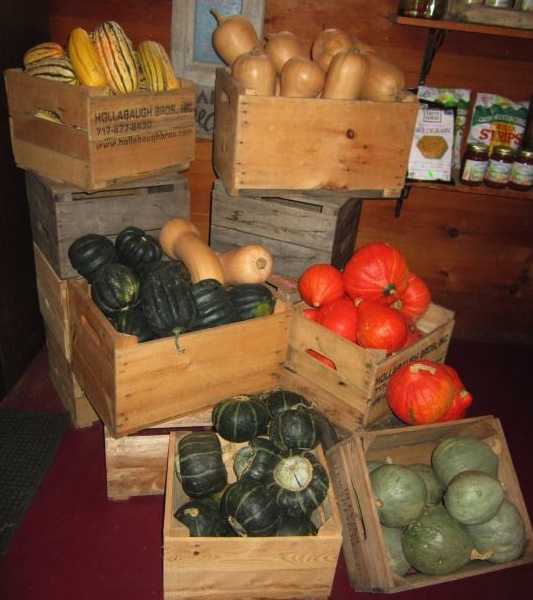Fall is the time of year when gardens disgorge their bounty and farm stands are chock-a-block full of wondrous fruits and veggies. It’s the best time to buy and store fresh food!
- Twenty-five and fifty-pound bags of onions and potatoes are on sale for incredibly low prices. Right now is the time to buy for the best deals of the year. Even organic produce, which is the best kind you can buy, is available at a bargain.
- Tomatoes, potatoes, onions, carrots, beets, peppers, leeks, lettuce, spinach, kale, Swiss chard, celery, turnips, pumpkins, and winter squash fill bins and baskets at the local farm stands.
Supermarkets, unfortunately, are full of “food-like” substances which contain herbicides, pesticides, dies, stabilizers, preservatives, chemicals, high fructose corn syrup and other fillers which not only don’t nourish us but present our bodies with difficult decisions on what to do with them. Real food this is not. Real food is the stuff that our ancestors ate for tens of thousands of years. And now is the best time to buy it.
Stock Up on Onions
You can find big bags of onions at many farm stands.

These onions will keep all winter long and don’t need very special environments. They like a dry space. Store them in the pantry, kitchen or cupboard. Just do keep an eye on them because if one starts to decompose, it needs to be removed (unfortunately, one bad apple does spoil the whole bunch).
Buy Plenty of Potatoes
Potatoes like a cool, dark space. If you have a room that you don’t heat in the winter but doesn’t freeze, this would be ideal. Go through the bag when you buy them and take out any that are dinged or bruised for eating right away. They should also be covered with a sheet or towel if the room is light.
STORE SOME Squash
Winter squashes are great keepers.

They do have to be perfect and have at least a short stem. Check them for bruises and pick the ones that are ding free. These need to be “sunned.” Put them outside on a picnic table or other spot in the Sun for about two weeks. Turn them a few times and bring them inside if frost threatens. Once they are seasoned, they can be stored on beams or a shelf. Don’t let them touch each other and place some newspaper under them. Again, keep an eye on them as when they start to decompose, they mush rather quickly.
GATHER GARLIC
Garlic is another great keeper. These will last into the winter although they may start to dry out around February. These keep nicely in a hanging basket in the kitchen or pantry.
BUY BEETS AND CARROTS
Beets and carrots will keep for many weeks in the refrigerator. Make some space in the vegetable bin and stock up. Or, place them with some mostly dry wood chips in five gallon buckets and store them also in a cool room. See my post on storing beets with wood chips for more detail.
KEEP SOME CABBAGE
Cabbages will also keep for several weeks in the refrigerator. Or, make some sauerkraut which will keep all year (see previous article on just how to do that). This also provides you with beneficial probiotics to help your immune system keep colds and flues at bay.
You can save a lot of money in the long run by making some big purchases today. This also keeps our local farmers in business. A win-win for all.
Photo images from Harlow Farm in Westminster, VT
Comments